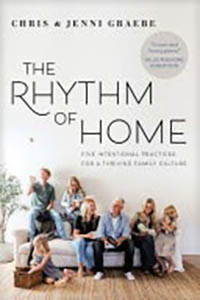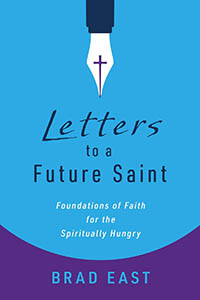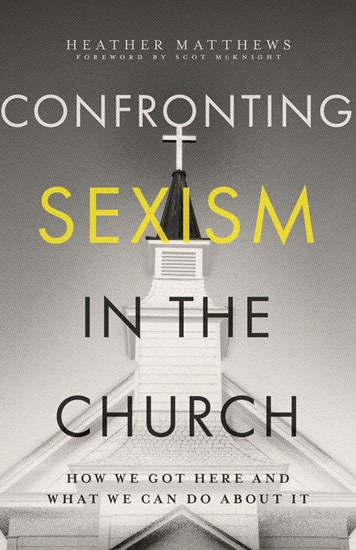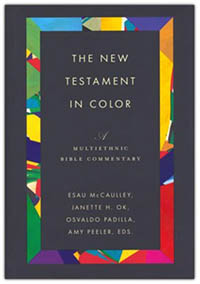Review: The Mary We Forgot
The Mary We Forgot
By Jennifer Powell McNutt (Brazos Press)
Mary Magdalene was among the last to leave the crucified Jesus on Golgotha and the first to bear witness to the resurrected Christ at the empty tomb. Even so, she has received a bad rap for nearly 2,000 years, author Jennifer Powell McNutt asserts.
 The Gospels present Mary Magdalene both as one whom Jesus delivered from demonic oppression, and also as one who supported Jesus’ ministry financially and was numbered among his followers. However, that is not the image most Christians have of her.
The Gospels present Mary Magdalene both as one whom Jesus delivered from demonic oppression, and also as one who supported Jesus’ ministry financially and was numbered among his followers. However, that is not the image most Christians have of her.
In part, she has been the victim of the “Mary muddle”—so many women named Mary in the Gospels that readers have struggled to keep them straight. Even some Church Fathers and Popes mistakenly conflated Mary Magdalene and Mary of Bethany.
Mary Magdalene also has been confused with the “sinful woman” in Luke 7 who anointed the feet of Jesus and unfairly has been labeled as a prostitute, McNutt maintains. Andrew Lloyd Webber’s Jesus Christ Superstar and Martin Scorsese’s The Last Temptation of Christ didn’t do her any favors in that regard. Webber and Scorsese perpetuated that misinterpretation of Mary as a reformed prostitute with a romantic interest in Jesus, but they were neither the first nor the last to do so.
McNutt, a professor of theology and Christian history at Wheaton College, insists Mary Magdalene rightly should be remembered and honored both as “the apostle to the apostles” and an “apostle among the apostles.” Christ himself commissioned Mary to “go and tell” others he was risen from the grave. Ancient church traditions not only attest to her witness to Jesus’ inner circle of disciples, but also to missionary activity of her own.
Christians long have wondered about the decision by the apostles in Acts 1 to select Matthias as a replacement for Judas Iscariot. Some believe they may have acted prematurely, because God already had in mind Saul of Tarsus as the apostle in waiting.
But in reading The Mary We Forgot, I found myself asking a different question. What if the apostles failed to recognize Christ himself already had named and commissioned Mary Magdalene as an apostle? How would views about women in ministry have been different if Peter, James, John and the others had recognized fully the apostleship of Mary Magdalene?
Ken Camp, managing editor
Baptist Standard
 Lundgren begins by defining a host of terms and concepts related to safety. He then offers an extended examination of human conceptions of danger in the premodern, early-modern and late-modern eras. Premodern people viewed danger in relation to a world filled with gods and spirits. The disenchanted world of the early-modern era understood danger as a natural feature of the material world. For the late-modern world, danger resides within us.
Lundgren begins by defining a host of terms and concepts related to safety. He then offers an extended examination of human conceptions of danger in the premodern, early-modern and late-modern eras. Premodern people viewed danger in relation to a world filled with gods and spirits. The disenchanted world of the early-modern era understood danger as a natural feature of the material world. For the late-modern world, danger resides within us. It also happened much more recently to some members of Mars Hill Church when they dared question the authority of Pastor Mark Driscoll, who had become—in the eyes of many in the church—the center of their universe.
It also happened much more recently to some members of Mars Hill Church when they dared question the authority of Pastor Mark Driscoll, who had become—in the eyes of many in the church—the center of their universe. That’s a tall order, but the faith leaders in local church ministry fill the pages of The Rhythm of Home: Five Intentional Practices for a Thriving Family Culture with wisdom, truth, grace, honesty and practical ideas gleaned from their own successes and failures. Each chapter begins with a Scripture or quote, and the Graebes stress starting with a shared vision, establishing a loving home and building a strong community of support.
That’s a tall order, but the faith leaders in local church ministry fill the pages of The Rhythm of Home: Five Intentional Practices for a Thriving Family Culture with wisdom, truth, grace, honesty and practical ideas gleaned from their own successes and failures. Each chapter begins with a Scripture or quote, and the Graebes stress starting with a shared vision, establishing a loving home and building a strong community of support. In When the Church Harms God’s People, Langberg writes as one who loves the church enough to offer an honest diagnosis of its sickness in order to help restore its health. She draws upon more than 50 years of experience as an internationally recognized psychologist and trauma expert and as former chair of the board of the American Association of Christian Counselors.
In When the Church Harms God’s People, Langberg writes as one who loves the church enough to offer an honest diagnosis of its sickness in order to help restore its health. She draws upon more than 50 years of experience as an internationally recognized psychologist and trauma expert and as former chair of the board of the American Association of Christian Counselors. Like the additional verses to “Jesus Loves Me,” the depths of Christianity remain unknown to too many Christians. Brad East seeks to remedy this in Letters to a Future Saint.
Like the additional verses to “Jesus Loves Me,” the depths of Christianity remain unknown to too many Christians. Brad East seeks to remedy this in Letters to a Future Saint. Some of these books are more helpful than others in reaching the audience Matthews notes most needs to hear, to understand, the reach and impact of sexism in the church—within evangelical Christianity most especially, where sexism is “baked into the cake.” That audience is men.
Some of these books are more helpful than others in reaching the audience Matthews notes most needs to hear, to understand, the reach and impact of sexism in the church—within evangelical Christianity most especially, where sexism is “baked into the cake.” That audience is men. The New Testament in Color is composed of 22 commentaries on the books of the New Testament written by 20 different scholars, along with five introductory chapters on biblical interpretation from five ethnic perspectives—African American, Asian American, Hispanic, Native American (Turtle Island) and Majority-Culture (Anglo)—and chapters on gender, mental health, linguistics and immigration.
The New Testament in Color is composed of 22 commentaries on the books of the New Testament written by 20 different scholars, along with five introductory chapters on biblical interpretation from five ethnic perspectives—African American, Asian American, Hispanic, Native American (Turtle Island) and Majority-Culture (Anglo)—and chapters on gender, mental health, linguistics and immigration. Painstakingly researched in old newspapers, oral histories, congressional records, court cases and other primary sources, Wingate interweaves historical events and real people like social reformer Kate Barnard into a novel that tells of a time when powerful men exploited or eliminated Choctaw and other tribal children to wrest control of their valuable, oil-rich land.
Painstakingly researched in old newspapers, oral histories, congressional records, court cases and other primary sources, Wingate interweaves historical events and real people like social reformer Kate Barnard into a novel that tells of a time when powerful men exploited or eliminated Choctaw and other tribal children to wrest control of their valuable, oil-rich land. American Christians’ values may mirror America more than Christ, particularly when it comes to power, enemies, money, sexuality, politics, race and suffering. Steve Bezner holds up an American view of these seven areas and compares it against Scripture. In particular, he compares the American view against what Jesus taught regarding the kingdom of heaven.
American Christians’ values may mirror America more than Christ, particularly when it comes to power, enemies, money, sexuality, politics, race and suffering. Steve Bezner holds up an American view of these seven areas and compares it against Scripture. In particular, he compares the American view against what Jesus taught regarding the kingdom of heaven. Over My Head, Book 1 (Genesis-Deuteronomy) in Patrick Wigglesworth’s Bizarre Bible Adventure series by Liz and Jack Hagler seeks to answer those questions and many more in a kid-friendly, graphic novel format. Similar to comic books, graphic novels use sequential art, in this case black and white drawings by Liz Hagler, to tell a stand-alone story that can be fiction or nonfiction.
Over My Head, Book 1 (Genesis-Deuteronomy) in Patrick Wigglesworth’s Bizarre Bible Adventure series by Liz and Jack Hagler seeks to answer those questions and many more in a kid-friendly, graphic novel format. Similar to comic books, graphic novels use sequential art, in this case black and white drawings by Liz Hagler, to tell a stand-alone story that can be fiction or nonfiction. Basham writes in an easily accessible style. She frankly admits she does not qualify as a theologian, nor does she make many attempts at describing the theological ramifications of her claims. She sees her task as reporting the facts—a task she executes through both anecdotal narratives and hardline receipts.
Basham writes in an easily accessible style. She frankly admits she does not qualify as a theologian, nor does she make many attempts at describing the theological ramifications of her claims. She sees her task as reporting the facts—a task she executes through both anecdotal narratives and hardline receipts.